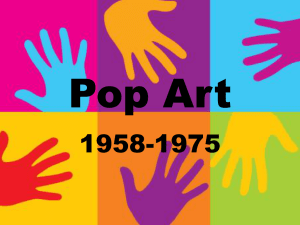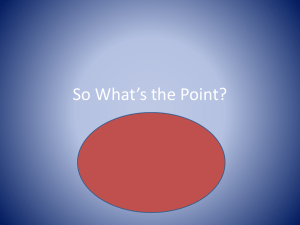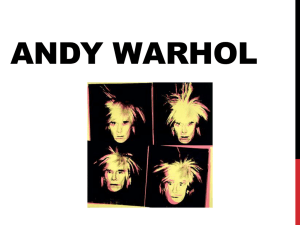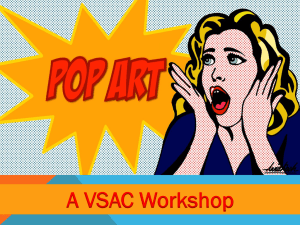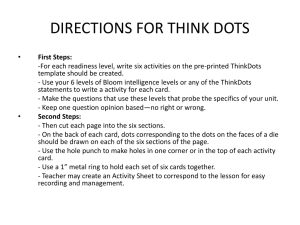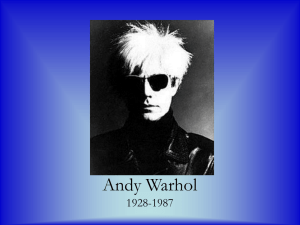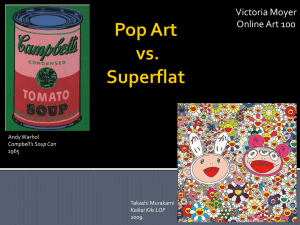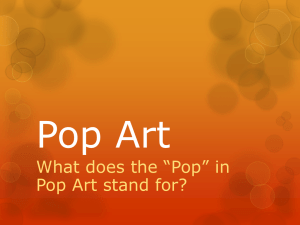Pointellism pointellism2
advertisement
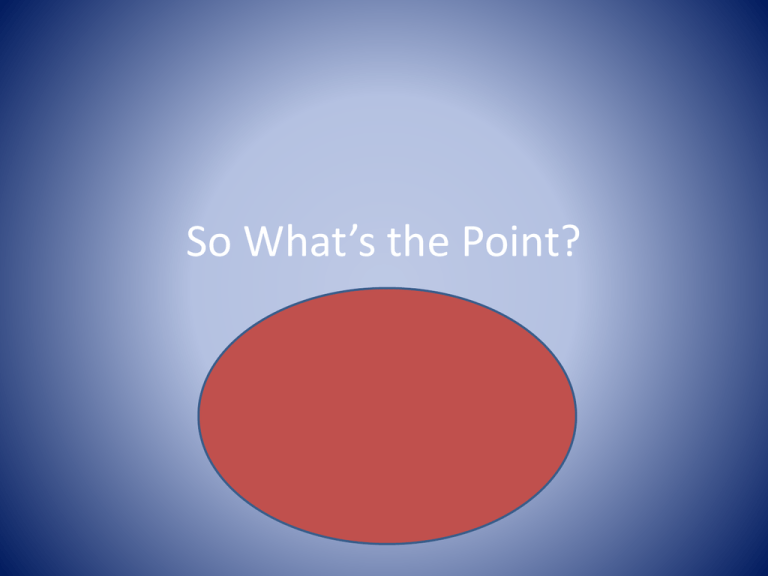
So What’s the Point? • Pointillism (pron.: /ˈpwɛntɨlɪzəm/) is a technique of painting in which small, distinct dots of pure color are applied in patterns to form an image • Pointillism is in sharp contrast to the traditional methods of blending pigments on a palette. Pointillism is analogous to the four-color CMYK printing process used by some color printers and large presses that place dots of Cyan (blue), Magenta (red), Yellow, and Key (black). Televisions and computer monitors use a similar technique to represent image colors using Red, Green, and Blue (RGB) colors. • The painting technique used for pointillist color mixing is at the expense of the traditional brushwork used to delineate texture. • The majority of pointillism is done in oil paints. Anything may be used in its place, but oils are preferred for their thickness and tendency not to run or bleed Georges Seurat 1859-1891 • One of the first artists to use this style. Post impressionism George Seurat used a series of dots to create his works of art. He lived a short life of 32years forever changing the face of artistic works to come. The cause of his death is uncertain, and has been variously attributed to a form of meningitis, pneumonia, infectious angina, and diphtheria • Next time we can visit Ben Day dots and Rob Lichtenstein http://www.creativebloq.com/graphicdesign/pointillism-examples-dot-art-11121135 • The Ben-Day Dots printing process, named after illustrator and printer Benjamin Day, is similar to Pointillism. Depending on the effect, color and optical illusion needed, small colored dots are closely-spaced, widely-spaced or overlapping. Magenta dots, for example, are widely-spaced to create pink. 1950s and 1960s pulp comic books used Ben-Day dots in the four process colors (cyan, magenta, yellow and black) to inexpensively create shading and secondary colors such as green, purple, orange and flesh tones. • Ben-Day dots differ from halftone dots in that the Ben-Day dots are always of equal size and distribution in a specific area. • Ben-Day dots were considered the hallmark of American artist Roy Lichtenstein, who enlarged and exaggerated them in many of his paintings and sculptures, especially his interpretations of contemporary comicbook and magazine images. Other illustrators and graphic designers have used enlarged Ben-Day dots in print media for a similar effect. Roy Lichtenstein 1923-1997 One of Roy’s famous works on display in Europe, “WHAM” Onomonopia • Defined as: • The formation or use of words such as buzz or murmur that imitate the sounds associated with the objects or actions they refer to. A link to an interview with Roy • http://youtu.be/nPRmSAsq YyQ Mabey next time we can explore… • Around the same period of time Andy Warhol was becoming more popular and took commercial artistry to new heights Andy Warhol "I'd prefer to remain a mystery. I never give my background, and, anyway, I make it all up different every time I'm asked.“ – Andy Warhol • Born on August 6, 1928, in Pittsburgh, Pennsylvania, Andy Warhol was a successful magazine and ad illustrator who became a leading artist of the 1960s Pop art movements.. Warhol died on February 22, 1987, in New York City. It Began with, “Blotted Line” He entered the world of design • • Andy Warhol’s drawing The French Look is one of many shoe illustrations he created using a special type of line drawing known as the blotted line technique. Warhol first experimented with blotted line while still a college student at Carnegie Institute of Technology. He continued to craft this technique in his commercial work in New York City throughout the 1950s. Blotted line enabled Warhol to create a variety of illustrations along a similar theme. This type of production allowed him to bring multiple ideas to clients and increase the odds one of his drawings would be chosen for the final advertisement. Blotted line combines drawing with very basic printmaking. Warhol began by copying a line drawing on a piece of nonabsorbent paper, such as tracing paper. Next he hinged this piece of paper to a second sheet of more absorbent paper by taping their edges together on one side. With an old fountain pen, Warhol inked over a small section of the drawn lines then transferred the ink onto the second sheet by folding along the hinge and lightly pressing or “blotting” the two papers together. Larger drawings were made in sections. Completing a large blotted line drawing could take quite a bit of time and multiple pressings. The process resulted in the dotted, broken, and delicate lines that are characteristic of Warhol’s illustrations. Warhol often colored his blotted line drawings with watercolor dyes or applied gold leaf. • Warhol was famous for his blending of advertising with art. He walked day to day culture into the artistic world. He also pushed “art” without the artist Picture $100 million Dollars (2008) • " Eight Elvises” Now it is your turn • print four copies of an image onto watercolor paper. If you don’t have watercolor paper, you can print onto plain copy paper but use colored pencils instead of watercolors. Supplies Needed: Watercolor paper/cardstock/white paper Sheet of white paper Watercolor paints/colored pencils Paintbrush Water Scissors Glue Stick Cover your work space. This is very important because you will be painting all the way to the edge of your pictures. Cut out all four pictures so there is no border around them. Choose about 6 bright colors. The more water you use the more the lines will show through, but if your paint is too watery it will run. Fill in your pictures with bright colors. Color the face one color, the body and hair another color, the background a third color, the eyes a fourth color, and the mouth and fifth color. Try not to use the same color twice for any section. Don’t pay too much attention to details. Mount all of your pictures on a final piece of paper. It goes from this to this To this… Sources • © 2013 A+E Networks. • http://artsmarts4kids.blogspot.com/2008/10/ create-your-own-andy-warhol-portrait.html
